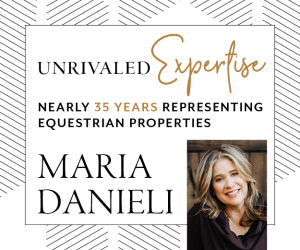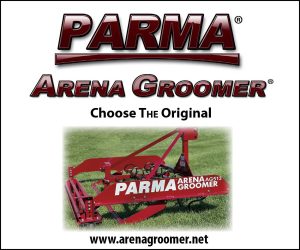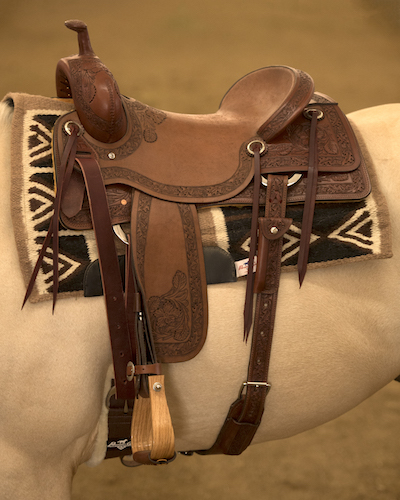Selecting a Saddle
by Al Dunning

Al Dunning has been in the horse business for over 50 years and has seen all kinds of saddles. Some are very functional, some are beautifully made, some are built to fit the horse properly, and others he calls ridiculous. The options available today are vast in number. So how do we choose a suitable saddle? We asked Al four questions on saddle selection.
What is the most important consideration when choosing a new saddle?
Fit. This means that the tree of the saddle should conform properly to the conformation of your horse’s back. The word “tree” is defined as a wooden (though sometimes another material) set of “bars” that lies on either side of the spine of the horse, joined by a rear cantle and front fork. The shape of each of these components determines the fit of the saddle. Something for you to think about: many times a saddle will feel good to you but not fit your horse. If it doesn’t work well for your horse, it is going to cause irritation, soreness, a bad attitude, and a poor ride. There’s a lot more to think about than your personal comfort.
How do you determine if the saddle fits the rider?
By feel. My best way to define a good feel is “I don’t feel it” and nothing is uncomfortable to me. It is big enough, the seat doesn’t bind me up in any way, and nothing pushes against me that may deter me from a pleasant or athletic ride. I know when I’m riding a good saddle if I don’t have to think about it.
I like to be as close to my horse as possible and most of the time I ride a saddle without a padded seat. The construction of a saddle should make it so that you feel like you are sitting close to your horse. Being a competitive rider, I’m looking for a saddle that gives me an athletic ride. This means that the saddle does not deter me from being able to move around, sit extra deep or use my legs freely.
What variations in craftsmanship are important to you?
It’s obvious that the number one factor is how the tree fits your horse. The tree shouldn’t encumber the shoulders or put pressure on the loin area of the horse. A good set of bars distributes the rider’s weight throughout the horse’s back.
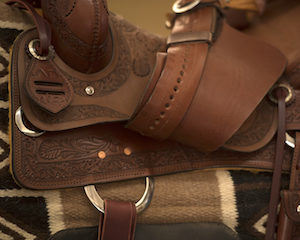
It’s important that the swells have enough gullet space and don’t sit on the withers, causing abrasion. The width of the gullet, which is the space between the front of the bars, is determined by the thickness of the shoulders. The height of the gullet should be determined by the prominence of the withers.
I like to measure all these things, but the best way is to take a bare tree before adding the leather and set it on the horse’s back to determine if it is proper for your horse’s individual conformation.
The cantle of the saddle has a lot to do with your particular riding activities. Some riders like a more upright cantle for added security where other riders like a more laid back cantle for more freedom.
Obviously, the horn has some specific uses. In roping, a larger, thicker horn surrounded by rubber is for dallying your rope. While negotiating obstacles or for security, a horn is good to hang onto for safety reasons. But again, like other parts of your saddle, the horn should fit your intended use.
The leather has a lot to do with longevity of the saddle. Good leather, as Herman Oak leather, is sturdy and adds to the appearance. The conchos or saddle strings are used to hold certain parts of the saddle together. It is not uncommon to see small nails under the gullet or in various other places to ensure tightness. You can usually tell a quality saddle by the edging of the leather and the quality and straightness of the stitching. I’ve never preferred dyed leather. Instead I prefer oiled leather.
What is the purpose of different riggings?
Hardware is mainly seen in the D-rings that comprise the front and back cinch areas. A double-rigged saddle is comprised of front and back D’s and cinches. The more vigorous your activity, the more secure you need your saddle—front cinch, back cinch and breast collar. For saddles needing more strength, your front D should be rigged in the tree. These saddles will take a jerk from a cow in a roping event, as an example.
Saddles without those requirements may be rigged in the skirt. Both ways of rigging are used frequently. The major difference when a saddle is rigged in the skirt is less bulk between your knees and the horse. This saddle is usually secure for most activities other than roping.
There can be a weight difference between the two, also. Most saddles weigh somewhere around 38 pounds. By lightening your tree and amount of leather used on the saddle, a quality saddle can be made up to ten pounds lighter.
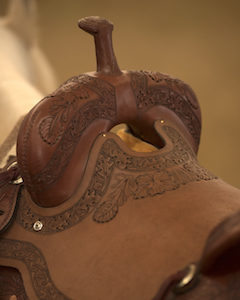
The placement of the front D has a lot to do with how your saddle pulls down on your horse when cinched. Different conformed horses are suitable to different D ring placements. When talking about this portion, full rigged or 7/8 rigged are usually preferable.
Saddle fit is technical. Horses come in all shapes and sizes. I train a number of horses and find there are a few quality handmade saddles that will fit the majority. Every now and then, I have an odd case with a horse with extremely heavy shoulders, mutton withers, high withers, or a long or short back that needs a custom-made saddle just for them.
Horses that are expected to perform at a high level need every advantage possible. As a good horseman or horsewoman, you should start by making sure your saddle and the rest of your equipment is suited and fit for your horse.
Originally Published June 2017

Al Dunning of Scottsdale, Arizona, is one of the most respected horsemen in the industry. Al and his students have garnered 48 world and reserve world championships. He has held numerous national leadership positions and earned multiple honors including induction into the AzQHA Hall of Fame. His 50+ years of experience as a professional trainer has led him to produce books, DVDs, clinics, Team AD online mentoring, and AD Tack, selling all the tack he uses as well as his books and videos. Al’s ability to reach people comes from his love of horses and out of respect to the mentors in his own life. For more information, visit https://www.aldunning.com or www.aldunningsadtack.com.


